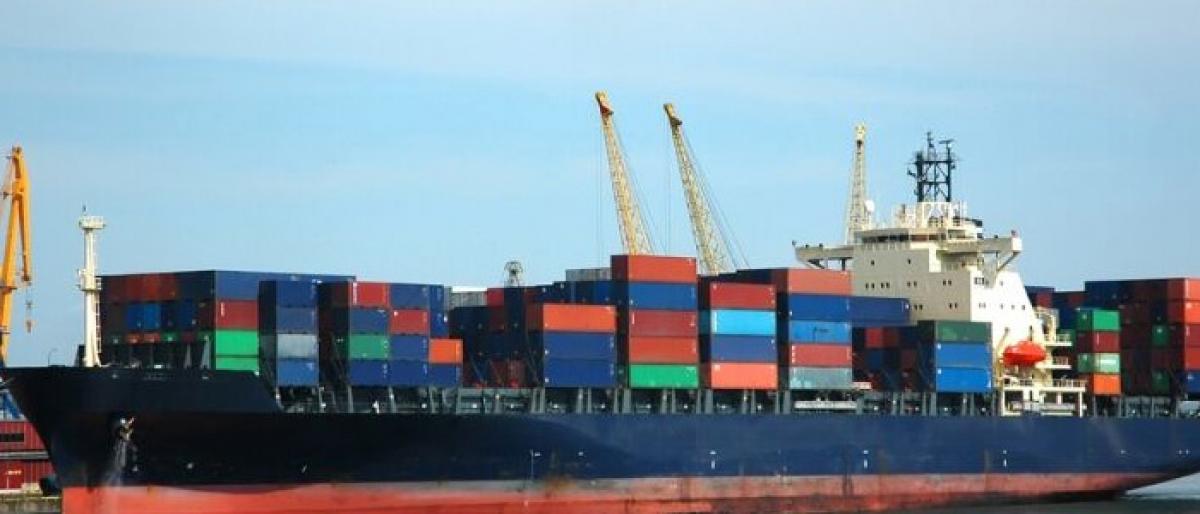Live
- Porous silicon oxide electrodes can fix durability issues in batteries: Researchers
- Jalandhar civic polls: AAP promises launch of 100 e-buses, round the clock water supply
- Economic upliftment of rural women is priority of Tripura govt: CM Saha
- Rajmata Jijabai Trophy: Manipur move to top of the table, T.N register first win
- Italian envoy Baroli hoping to strengthen ties with India through football
- CPI-M revokes suspension of Bengal party leader accused of sexual harassment
- Rachakonda Commissioner Emphasizes Health and Education at Uniform Diet Launch
- BJP leader visits late ASI Surendra Singh in Rajasthan, assures full govt support
- PM Modi tears into Gandhi family for its habit of amending Constitution
- Young Kabaddi Player Dies of Heart Attack During Match in Mandya
Just In

India has a coastline of approximately 7,500 km and as we look to build infrastructure to boost economic growth and jobs, the one question that we must address is: Does having a long coastline matter? Or to put it another way: What advantages could its coastline provide India?
India has a coastline of approximately 7,500 km and as we look to build infrastructure to boost economic growth and jobs, the one question that we must address is: Does having a long coastline matter? Or to put it another way: What advantages could its coastline provide India?
For a country that spends approximately 14 per cent of GDP on logistics costs and is a large consumer of energy, the coastline offers the opportunity to both make logistics more efficient and potentially generate energy. Coastal shipping and offshore wind energy are two sectors that the coastline can be used to grow and boost infrastructure creation, especially given the fact that both these sectors are new and relatively unexplored in the country.
Coastal shipping is an important component of the government's Sagar Mala project. It has inherent cost advantages versus road and rail transportation. According to the Ministry of Shipping, coastal shipping costs one-sixth of what rail costs, therefore significant cost savings are possible for industries in which transportation forms a large part of the cost base, such as cement and fertilisers. Essentially, coastal shipping has the capacity to transform "bulk transportation", in the process reducing the burden on the road and rail networks.
The implementation of coastal shipping infrastructure has faced impediments such as the lack of financing for ships, lack of infrastructure at both major and minor ports, and, most importantly, the lack of linkages on land to help deliver the bulk goods to the end user. It is important to be patient with regard to the development of coastal shipping infrastructure. Changes such as these take time, and the positive impact can be seen through the years to come. Streamlining of policies, effective financing mechanisms and appropriate regulatory schemes will have to be worked on by industry participants and the government to deliver the desired result.
The coastline also has tremendous potential to cater to India's energy needs, especially with a focus on wind energy. Recent news of Norway-based Statoil, one of the largest offshore oil and gas operators, changing its name to Equinor to reflect a future where energy will be driven by renewables rather than fossil fuels, shows the clear focus globally. What is even more interesting is that Statoil's first floating wind farm, "Hywind Scotland", started delivering electricity in October 2017.
Such news is significant for India. The key takeaway being that offshore wind energy is in the reckoning now. A recent study by International Renewable Energy Agency (IRENA) found the average generation cost of offshore wind energy at $140/MWh, still relatively high versus onshore wind at $60/MWh. However, what is more interesting, given the relatively nascent technology of offshore wind, generation costs are expected to dip well below $100/MWh by 2020.
Such technological progress and cost-reduction have significant ramifications for India. The pace of offshore wind development globally and the decline in generation costs of offshore wind energy suggest that the country's coastline can be a valuable source of energy in the future. That said, for offshore wind energy to deliver results and provide energy on a large scale, significant investments will be required in development of wind farms, transmission of energy and creating port infrastructure to service the industry.
To truly utilise the coastline to deliver value, India will have to keep building on existing policies in both the coastal shipping and renewable energy space. These are large infrastructure projects that require significant technical expertise and, more importantly, patient capital. Strong policy frameworks from the government that assure investors of consistent policymaking regardless of which way political winds blow will be important to truly boost these sectors.
Coastal shipping infrastructure is still relatively underdeveloped in India while offshore wind is still at ideation stage. It is important for industry participants and the government to deliver financially feasible and efficiently completed projects to start with, to give confidence to the sector. Successful pilot projects that are financially feasible and well-structured provide a very strong signal to market participants, that the policymakers are ready to walk the talk. Hence boosting much-needed investment.
By: Taponeel Mukherjee

© 2024 Hyderabad Media House Limited/The Hans India. All rights reserved. Powered by hocalwire.com







